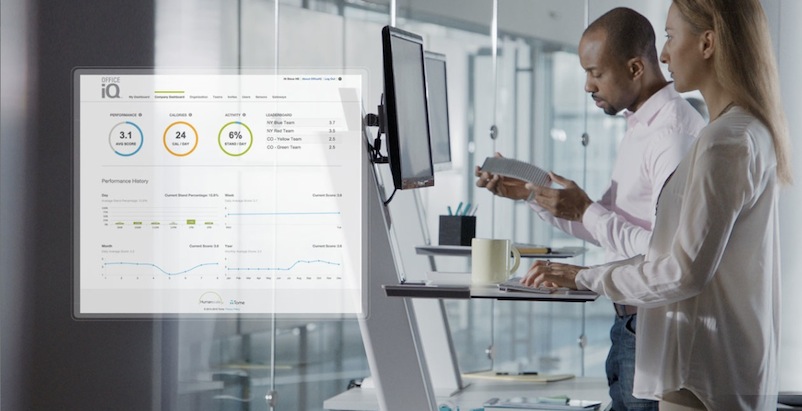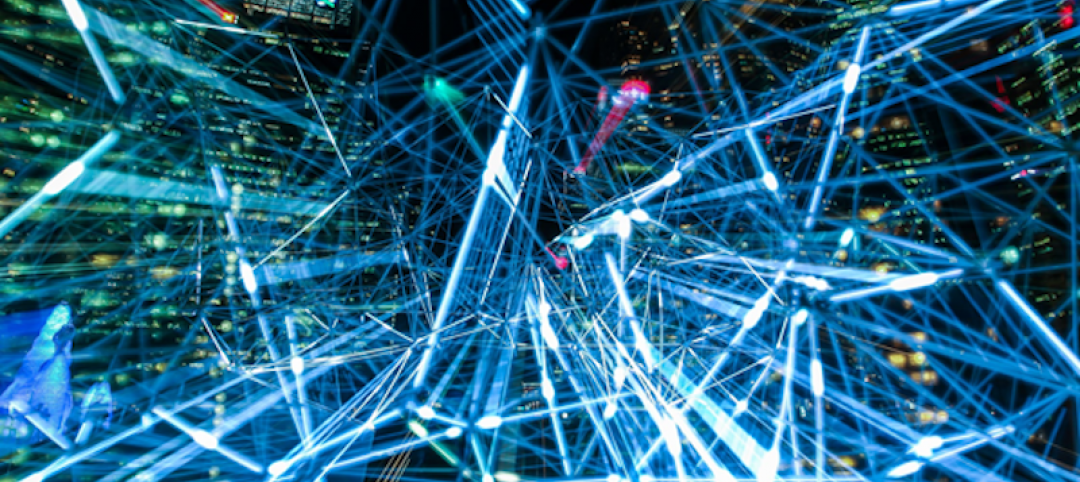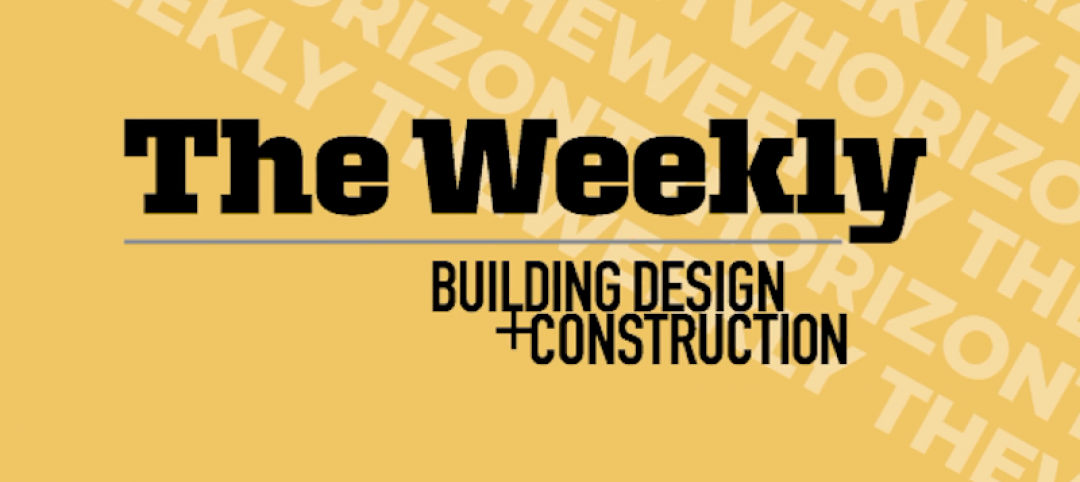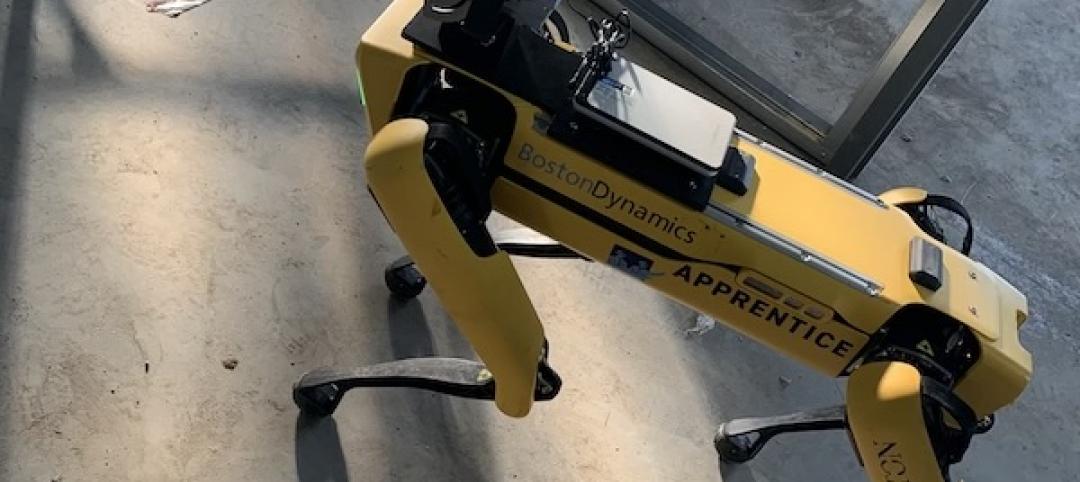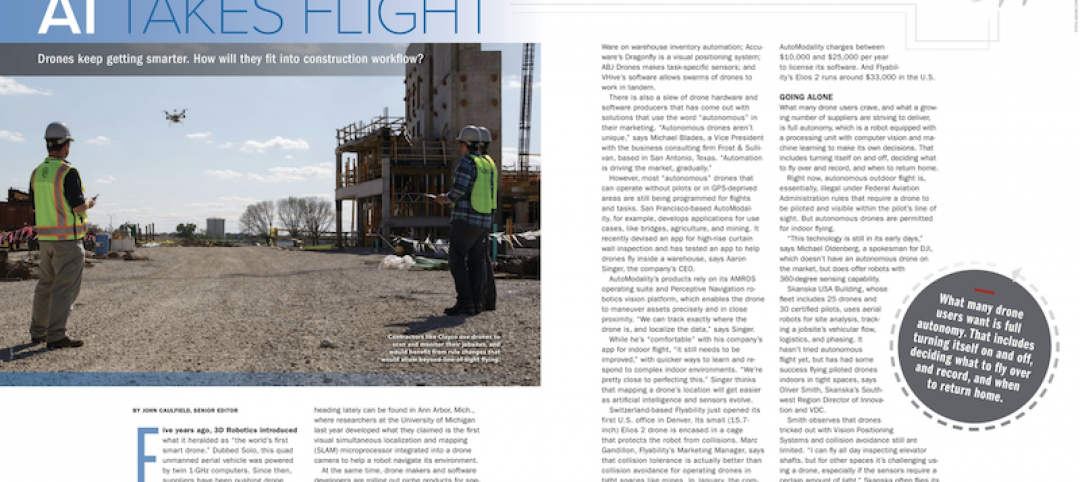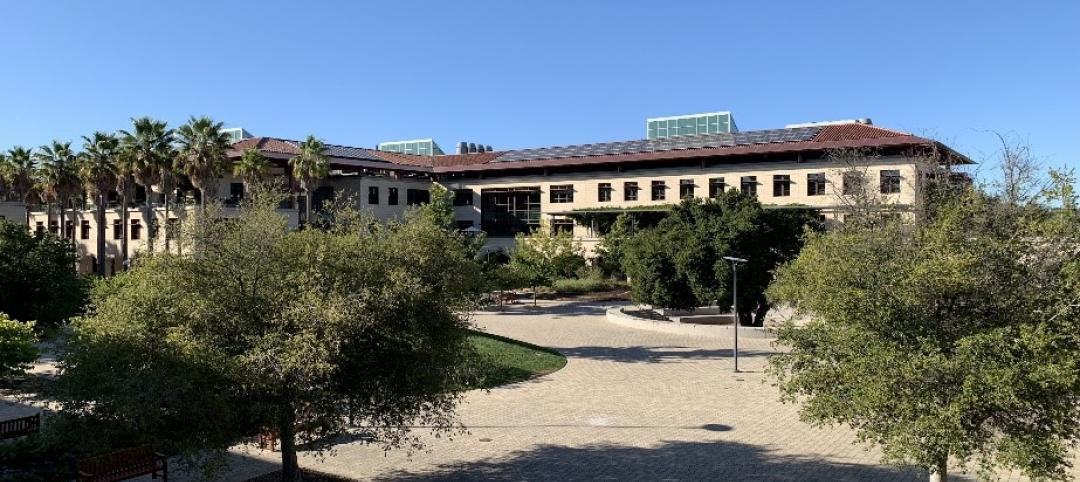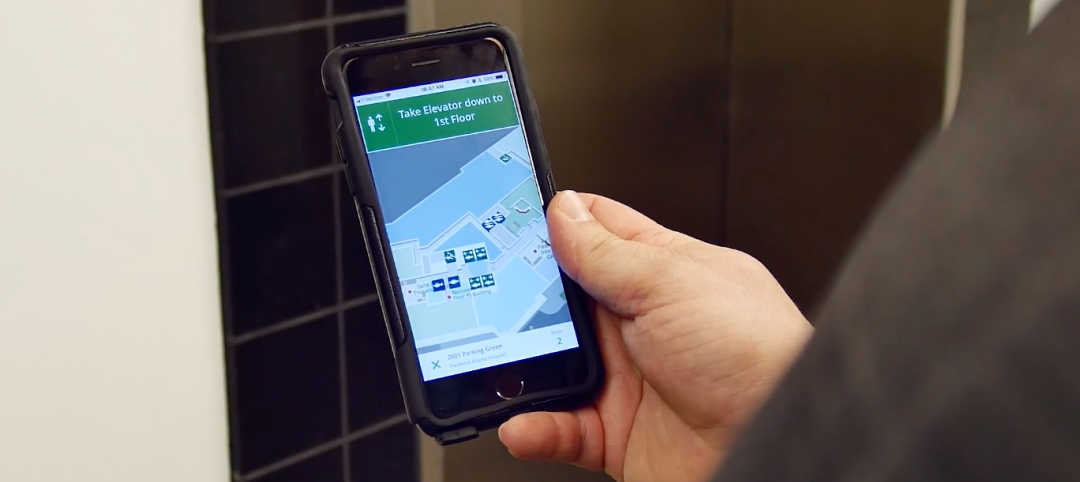CallisonRTKL has been working on a museum project in the Northeast where the Internet of Things (IoT) is part of the conversation about improving the building’s energy and operational efficiency, as well as its visitor and employee comfort.
The client was already on board about connecting sensors that monitor the museum’s MEP and HVAC systems, “and wanted to know how it might benefit more” from interconnectivity, recalls Michael Colburn, Associate and Designer with CallisonRTKL’s Technology Design Studio. So the firm incorporated integrated building technologies into the design. When an employee enters the building and “badges in,” the access control system will adjust the temperature and lighting, as well as raise or lower the shades, in that person’s office. The system also turns on switch-controlled outlets, which are turned off when the employee leaves the building.
CallisonRTKL and its client are tapping into the concept of IoT that has actually been around a while. For more than a decade, New York-based CytexOne has been guiding developers toward interconnectivity as a means of elevating their properties’ operations and productivity. The ZigBee Alliance, a nonprofit association with about 450 members, has been promoting its namesake’s open wireless standard for connecting everyday devices since 2002.
What’s stirring up all the excitement and hype about IoT’s transformative potential now are the advances in and ubiquity of smartphone, fiber-optic, and WiFi technologies and installations, coupled with analytical software that, at lightning speed, can make sense of the reams of Big Data aggregated from these devices. This combination is uncovering new insights into human, mechanical, and infrastructure behaviors and patterns.
 The office environment is where many AEC and tech experts believe the Internet of Things is having the greatest immediate impact. OfficeIQ, a system devised by Humanscale and Tome Software, uses sensors installed on adjustable workstations and chair casters to track how furniture and rooms are being used.
The office environment is where many AEC and tech experts believe the Internet of Things is having the greatest immediate impact. OfficeIQ, a system devised by Humanscale and Tome Software, uses sensors installed on adjustable workstations and chair casters to track how furniture and rooms are being used.
A host of IoT apps has emerged, many of them aimed at abetting facilities management. Anyone who wonders about the significance of this trend needs to look no further than the tech giants Apple, Samsung, and Google, each of which is refining its own IoT platform.
“Everything IoT is about enhancing how we engage with the user, and how the user responds to the space,” says Alan Robles, Associate and Experience Designer with Gensler’s Retail Group. “It is both passive and active, and allows us to create a broader palette and more effective space.”
But Robles and other AEC and tech experts caution that while data being generated by devices are voluminous, most “things” still aren’t set up to communicate with each other. As devices remain siloed, so too do buildings, which makes it tougher for urban planners to deploy IoT solutions to draw conclusions from patterns and behaviors as a means toward more habitable and better-run cities.
BRAINY OFFICES GUIDE EMPLOYEE ACTIVITY
On the AEC front, it appears that retail and healthcare are actively contemplating IoT-driven futures. “Retail is at the top of the list, as a survival strategy against e-commerce,” observes Colburn. “And healthcare wants to personalize the patient experience” to achieve higher satisfaction scores.
The ecosystem of things, communication, applications, and data analysis that IoT comprises appears to be finding its fullest expression in office spaces. David Karpook, Strategic Business Consultant with Planon, a Seattle-based company that specializes in workplace optimization, explains that many offices have either too few or too many meeting rooms, and they are usually the wrong sizes. Sensing devices “give you an understanding of how many people are actually showing up for meetings,” and that information can inform developers and Building Teams when they adjust spaces in current and future buildings.
Ben Waber thinks too many corporate decisions about managing space and employees are made “by people trying to emulate some business they read about in Harvard Business Review.” Boston-based Humanyze, which Waber co-founded and is its President and CEO, shows companies how to help employees set goals using data collected by ID badges embedded with sensor technology devised by the MIT Media Lab. The sensors capture face-to-face interactions and, when combined with other productivity metrics, provide insight into how an organization is functioning, and might work better.
At the recent Consumer Electronics Show in Las Vegas, Humanscale, which specializes in workplace design, and Tome Software launched OfficeIQ, a connected workspace solution that equips adjustable workstations with occupancy and height sensors as a means of helping companies monitor how those stations are used and to help employees make healthy choices throughout the day.
“This is just the beginning” toward an active, intelligent workplace, predicts Chris Gibson, Humanscale’s VP of Marketing and Product Management.
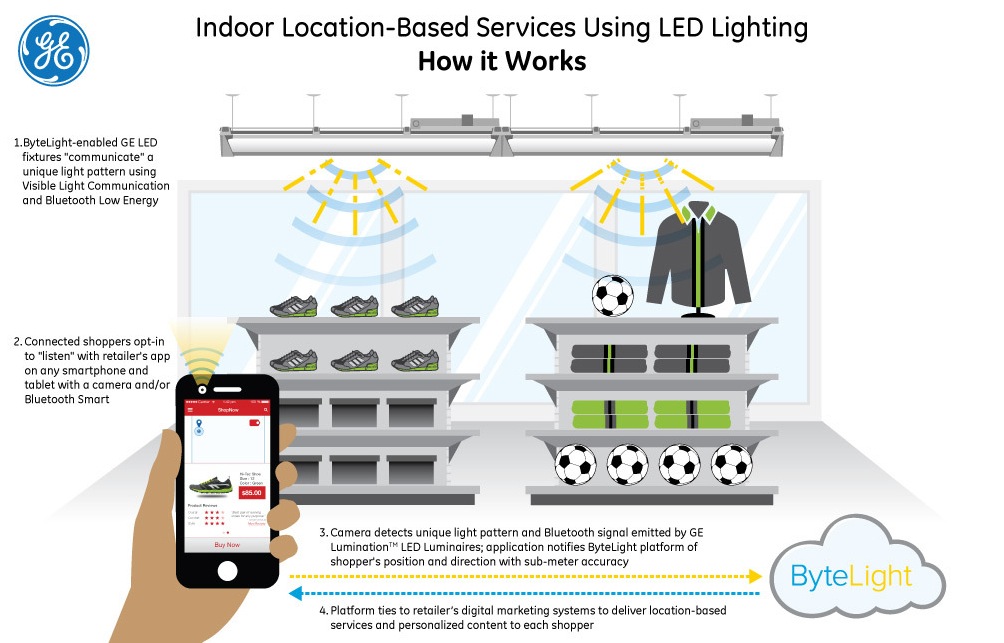 "Smart" lighting transforms retail: GE partnered with ByteLight to launch a line of “smart” LED light fixtures that can deliver custom, location-based content and services to shoppers.
"Smart" lighting transforms retail: GE partnered with ByteLight to launch a line of “smart” LED light fixtures that can deliver custom, location-based content and services to shoppers.
Perhaps the most elaborate—and, to some, Orwellian—manifestation of IoT in an office environment is The Edge, a 430,000-sf tower that, when it opened in Amsterdam last June, was immediately dubbed the smartest building in the world. The building’s main tenant, Deloitte, provides its 2,500 employees with a smartphone app that, according to BloombergBusiness, from the minute they wake up checks their schedules, recognizes their cars and directs them to an open parking space, assigns them a desk (there are only 1,000 in the building), and adjusts the temperature and lighting to their preferences.
The Edge’s central nervous system is stimulated by 28,000 sensors, from which Deloitte captures extensive data on how its employees interact. Even the hand dryers in the bathrooms are connected to the Internet to let the janitorial staff know when cleanup is needed.
This level of reconnaissance inevitably raises questions about worker privacy and security. Humanscale and Humanyze insist they don’t share individual data with employers, just aggregate information. But privacy concerns about IoT aren’t going away. Many companies are watching the outcome of a lawsuit filed last year by a woman in California who claims she was fired for deleting an app on a company-issued smartphone that she claimed allowed her employer, Intermex, to monitor her activities, even when she wasn’t working.
CRACKING OPEN URBAN SILOS
The Edge, writ large, is how IoT proponents envision cities coalescing. Gartner, with one of the largest IoT practices among research firms, predicts 1.6 billion connected things will be used by “smart cities” this year, a 39% increase from 2015. Commercial buildings are expected to account for 518 million of those connected things.
Gartner’s definition of a smart city is one where multiple sectors cooperate to achieve sustainable outcomes through the analysis of data shared among sector-specific informational and operational technology systems. Dean Freeman, Gartner’s VP of Research, tells BD+C that interconnectivity is occurring robustly in newer and expanding metros in Asia and the Middle East. The highest penetration of 4G today is in the United Arab Emirates, where Dubai is integrating IoT into users’ daily lives, as well as its municipal departments. It is on pace to become the world’s smartest city within three years, according to Anil Menon, Global President of Cisco’s Smart+Connected Communities business.
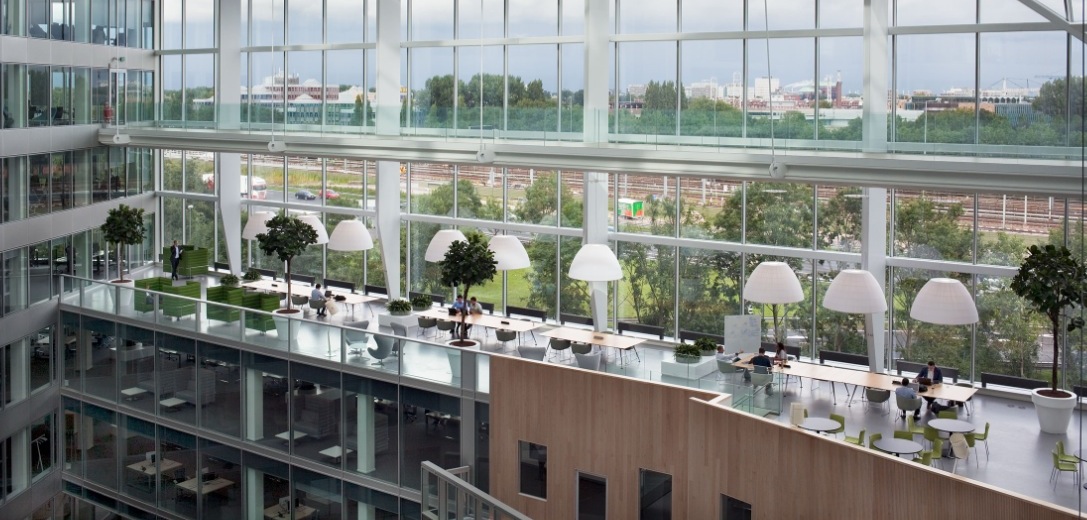 Dubbed the world’s smartest building when it opened in Amsterdam last summer, The Edge, a 430,000-sf office tower, is equipped with 28,000 sensors that allow its main tenant, Deloitte, to manage its employees’ daily activities, and give those employees greater control of their workplace environments. The building is distinguished by a 15-story atrium where every workspace is within 23 feet of a window and views. Photo: Raimond Wouda, courtesy PLP Architecture. Click photo to enlarge.
Dubbed the world’s smartest building when it opened in Amsterdam last summer, The Edge, a 430,000-sf office tower, is equipped with 28,000 sensors that allow its main tenant, Deloitte, to manage its employees’ daily activities, and give those employees greater control of their workplace environments. The building is distinguished by a 15-story atrium where every workspace is within 23 feet of a window and views. Photo: Raimond Wouda, courtesy PLP Architecture. Click photo to enlarge.
IoT can be more difficult in older cities, Freeman observes, where buildings mostly operate autonomously.
But that could be changing, too. Corporate giants AT&T, Cisco, Ericsson, Intel, Qualcomm, IBM, Deloitte, and GE are collaborating, with support from federal agencies, to develop a new framework for smart cities that will make it easier for communities to be more connected. The consortium, reports Fierce Wireless, will use three U.S. metros—Atlanta, Chicago, and Dallas—as its first test-bed cities for the platform.
AT&T is also developing a digital dashboard, called the Smart City Network Operation Center, which will give cities a real-time view of problems like power outages, water leaks, and traffic congestion. Last June, Sprint said it would deploy hardware from Cisco to construct, own, and manage an intelligent WiFi network as part of a smart city deployment in downtown Kansas City, Mo.
MANDATES ON THE HORIZON?
Freeman sees insurers and the government as the catalysts that will drive IoT solutions. In California, codes already mandate lighting and plug-load levels, “and are going to drive a lot more once the now CO2 regs come out.” Insurers, he adds, will demand that buildings be wired to spot systems hiccups before they become massive and costly breakdowns.
Planon’s Karpook believes the construction and renovation projects that succeed going forward are those that focus on specific data sets, but also are open to allowing new data “to come in along the edges.” This is where learning machines come into play.
Colburn sees interconnected buildings and smarter cities as inevitable, especially where leadership and grassroots agendas are in sync. “The game change will be when someone takes the reins to make these things work together and make experiences better,” he says.
To participate in this process, AEC firms, says Colburn, must step up to design these experiences by “wrapping systems into simple, commissionable” packages.
Related Stories
AEC Tech | Oct 23, 2020
Risk mitigation: Seeing the forest and the tree
This case study highlights how new data analysis tools can be successfully leveraged to gain insights into some of the more abstract aspects of building evaluations.
Architects | Oct 14, 2020
The Weekly Show: AI for building facade inspections; designing a world-class architecture firm
The October 15 episode of BD+C's "The Weekly" is available for viewing on demand.
Smart Buildings | Oct 1, 2020
Smart buildings stand on good data
The coming disruption of owning and operating a building and how to stay ahead through BIM.
Digital Twin | Aug 27, 2020
The Weekly show: Digital twin technology and social equity in the AEC market
The August 27 episode of BD+C's "The Weekly" is available for viewing on demand.
AEC Tech | Apr 13, 2020
A robotic dog becomes part of Swinerton’s construction technology arsenal
Boston Dynamics, the robot’s creator, has about 100 machines in the field currently.
AEC Tech | Mar 30, 2020
Will 3D printing be an answer for building more affordable homes?
A project in southern California will put onsite fabrication to the test against other construction modes.
AEC Tech | Mar 23, 2020
Working from home? Don't miss out on the latest issue of Building Design+Construction
BD+C's March issue features the largest and most important technological innovations across the AEC industry.
AEC Tech | Mar 17, 2020
A tree grows in Stanford: CIFE, VDC, and where it all began
As our industry adopts VDC as standard practice, it is important to remember where these ideas began and continue to emanate from today.
AEC Tech | Mar 10, 2020
No labor. No infrastructure. No problem.
OpenSpace’s AI-based reality capture tool looks to make site documentation a completely passive experience.
Healthcare Facilities | Mar 9, 2020
Mobile wayfinding platform helps patients, visitors navigate convoluted health campuses
Gozio Health uses a robot to roam hospital campuses to capture data and create detailed maps of the building spaces and campus.


